We are delighted to present our third exhibition in the 'defining tradition' exhibition series. In this show, we are celebrating the trailblazing artists who moved away from colour and pursued a more minimalistic style. Inspired by ancient Dreamings and the Australian landscape, their works are restrained in colour palette, yet remarkably powerful with exceptional compositional designs.
Article
On display are the great trailblazers such as Dorothy Napangardi and Lily Kely Napangardi. Dorothy’s early years at Mina Mina (where she lived a traditional bush life), along with the sacred Dreaming stories that inhabit the land, are the inspiration and subject of her work.
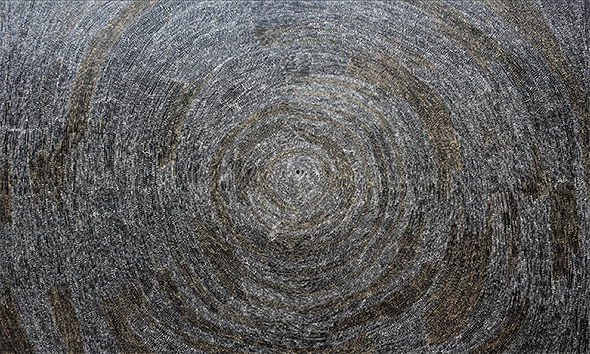
Dorothy’s early artistic endeavours consisted on subject matter such as Bush Plum and Bush Banana – wild fruits that grow in abundance around Mina Mina – depicted in vibrant acrylic tones. Even at this stage, her superb sense of composition was evident. When Dorothy had the opportunity to return to Mina Mina in the mid 2000s*, she had the opportunity to be inspired by the landscape, and her work developed towards a previously unseen abstracted method of Aboriginal art – all iconography pared back to the barest essentials. Just as Dorothy’s visual effects are subtle and intriguing, so too are their connection to culture and country.
The Australian art world instantly took note of this trailblazer. In 2002 her major solo exhibition (and the first solo exhibition for an Indigenous Australian artist) opened to considerable acclaim at Sydney's Museum of Contemporary Art, and later toured Asia. In 2012 she became the first indigenous Australian artist to have work accepted by Art Cologne, and in the same year her work was displayed in Ancestral Modern, an exhibition at the Seattle Art Museum. Since Dorothy’s passing, the New York MET has acquired one of her pieces, and there has been a retrospective exhibition at the Seatle Art Museum.
Also on display are the gestural artists such as Charmaine Pwerle. Daughter of Barbara Weir and granddaughter of Minnie Pwerle, Charmaine hails from one of Aboriginal art’s great painting dynasties. Whilst it is tempting to look at Charmaine's artworks in light of her famous relatives, her art demands attention in its own right.
It makes its own statements.
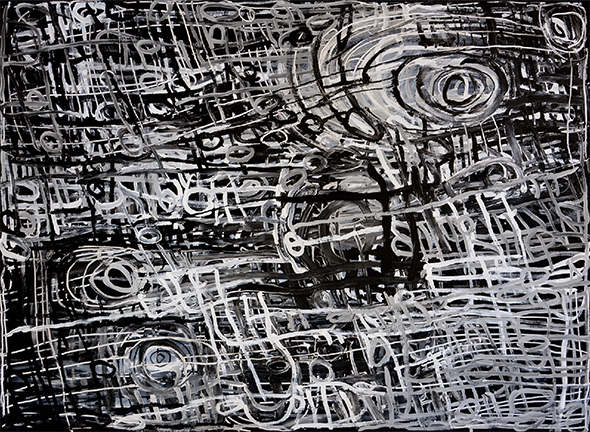
Charmaine’s subject matter draws on stories passed down for generations, but approaches it in a wholly different fashion than her grandmother to whom she is so often compared.
Defining Tradition | black + white also showcases artists who employ exceptionally fine dot work and complex designs, such as Anna Price Petyarre and Dulcie Long Pula.
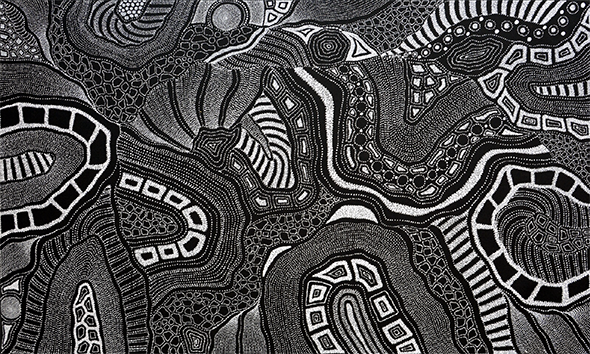
Like their forebears from Utopia, Anna and Dulcie continue to astound the art world with their distinct and rich artworks, in recent years both having branched out and pursued a more minimalistic style. Exhibiting a restrained colour palette, their works demonstrate an exceptionally fine attention to detail, highlighted by complex designs and fascinating insights into the deep underlying cultural meaning associated with their artworks.
We also present pieces in this exhibition by Clifford Possum and Helen McCarthy Tyalmuty, who have used a black and white colour palette to present stories that are of a more ominous, sombre tone. Follow the links below to find out more about these artwork stories:
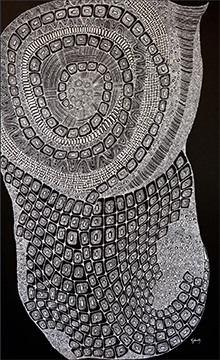
Click here to read the story of Awurrapun
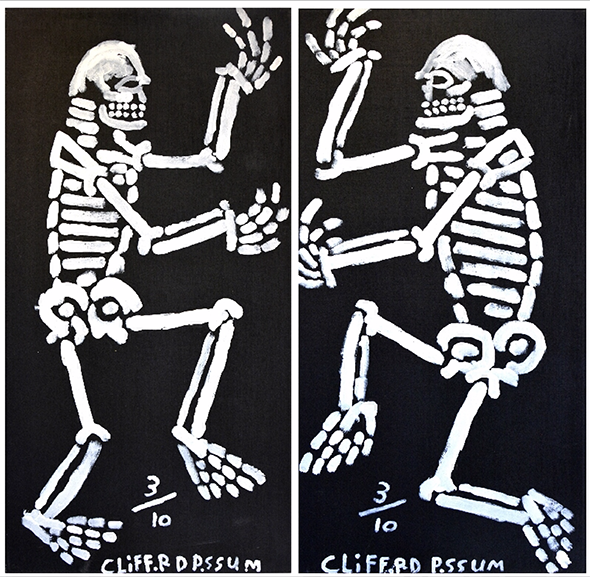
Click here to read the story of The Tjangala Brothers
Click here to read our recent blog piece: Understanding Colour
We look forward to seeing you in the gallery soon to see this incredible display of works!
* Mina Mina is now uninhabited desert country west of Nyirripi, since the Warlpiri people’s move into communities Nyirripi and Yeundumu.
Black & White Art at Home
Love the artworks on display in this exhibition, but are uncertain as to how to incorporate them in to your home or office space? Here is some advice from one of our Senior Art Consultants, Surrey:
The use of black and white Indigenous paintings for contemporary interior spaces create an unquestionably sophisticated and elegant look. The monochrome allows the viewer to focus on the power of the composition, the ancient narratives behind the designs.
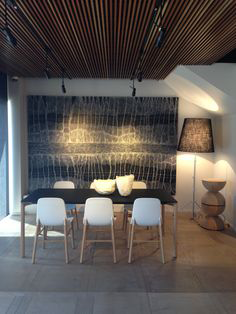
Used in modern interiors these striking artworks are often combined with sleek metals and rich timber surfaces and help create enviable calm, contemporary spaces that feel uncluttered and easy to live in.
Interested in arranging a home trial, digital hang, or using one of our other gallery services? Contact Us and one of our friendly Art Consultants will be able to assist you.